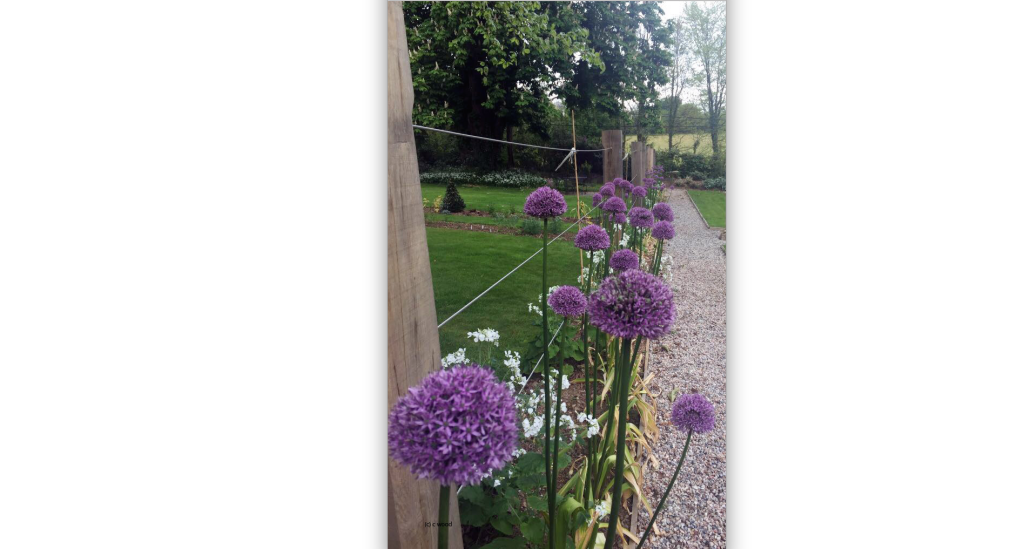Allium ‘Millenium’: 2018 Perennial of the Year
Published 8:08 am Thursday, February 1, 2018

- Allium cultivars are an excellent addition to both cottage gardens and more formal plantings. These are grouped with phlox and then interspersed with espaliered apple trees.
There are several groups that name perennial plants of the year, but the announcement I always watch for in the new year is the one by Perennial Plant Association. Their selections are interesting but not exotic, and sturdy enough to be grown by most weekend gardeners. Last year’s selection, Asclepias tuberosa, butterfly weed, was the perfect choice. It reflected the growing interest in native plants and the need to assist pollinators. It’s also easy to grow and beautiful.
This year’s plant, while not a native, is equally tough, easy to grow and loved by butterflies and bees. In fact, it’s a butterfly magnet for the late summer garden. Meet Allium ‘Millenium.’ Yes, that is the correct spelling. The name was registered with just one n in 2000. A. ‘Millenium’ was the outcome of a breeding program designed to produce a drought tolerant allium with late season flowers. It’s been in use long enough to have a stellar track record.
Allium is an ornamental member of the onion family. This variety has a faint oniony scent, interesting dark green, strappy leaves and tight, globe shaped clusters of lilac colored flowers that are about two inches in diameter. A. ‘Millenium’ grows about 1 to 1.5 feet tall and forms tight clumps. Unlike other Allium, this one is tolerant of dry growing conditions and maintains attractive foliage until late in the season. It’s also deer and rabbit resistant, probably because of the scent.
Plant A. ‘Millenium’ in the spring after danger of frost has passed. Select a location will full sun or one with partial shade in the afternoon. It prefers well-drained soil. Unlike other Allium, this one doesn’t reseed prolifically; it’s a very well behaved clump former that can be divided in the fall after the blooms have finished.
A. ‘Millenium’ is especially striking when planted in clusters with a low-growing goldenrod or Russian sage as companion plants. It’s also very dramatic when used in a more formal garden setting where it adds architectural interest.
CYNTHIA WOOD is a master gardener. She can be reached at cynthia.crewe23930@gmail.com.





